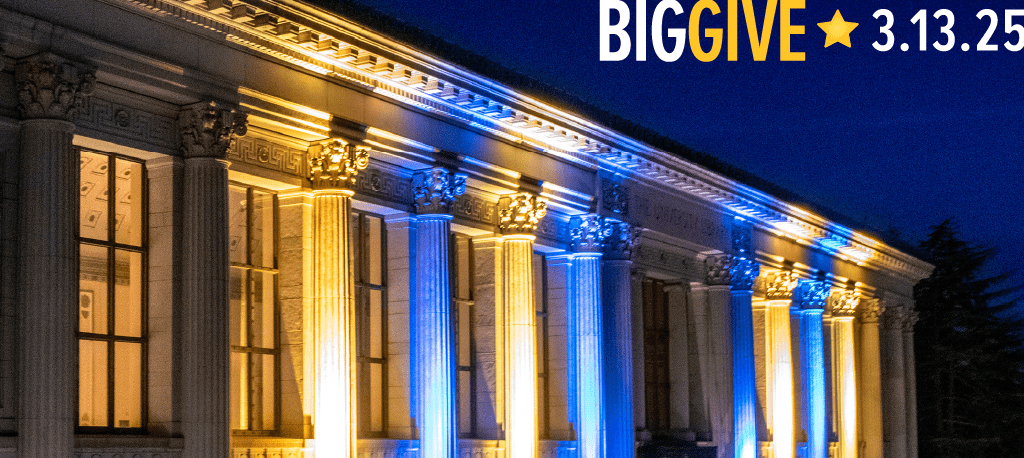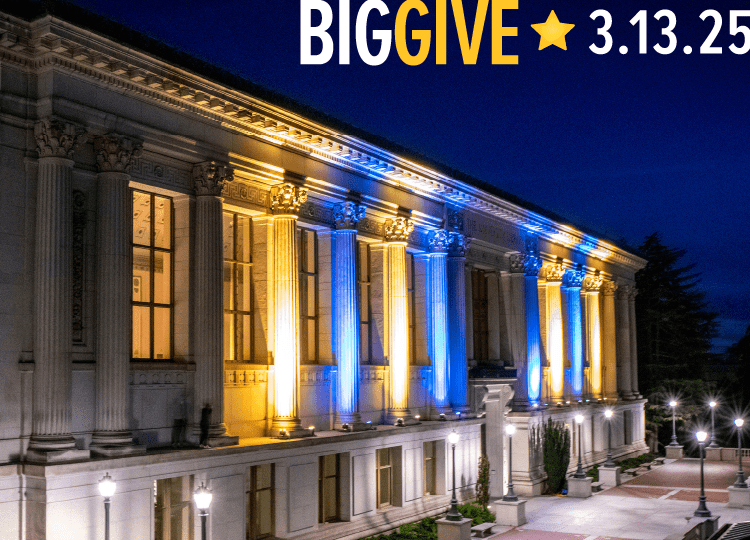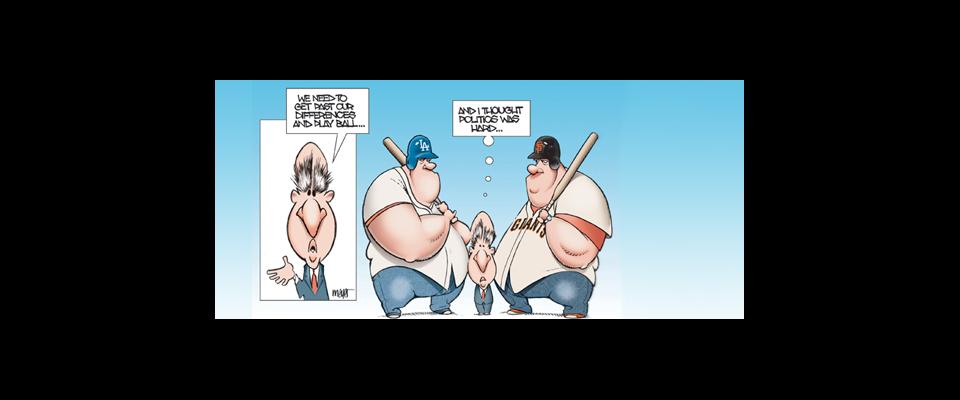By the time Robert E. Lee was born in 1807, slavery had spread widely across the American landscape but was concentrated in the Deep South, in cotton-growing areas. Lee’s home in northern Virginia, the so-called Upper South, grew almost no cotton. The cash crops of Virginia were tobacco, corn, and wheat, and its beautiful and bountiful Shenandoah Valley represented, for its day, what California’s agriculturally rich Central Valley does today. But the horrific Virginia practice of breeding slaves for markets further south, the internal slave trade (the British Royal Navy having ended external slaving) drove some Virginia slaves to revolt, Nat Turner a case in point.
There, in what locals call the Old Dominion, 26 Cal alumni and I last fall set out to discover the real Robert E. Lee—not the man of marble or the ubiquitous general on horseback. With this Bear Trek, we commenced a three-phase American Civil War journey, each of which involved a two-week visit to sites designed around a key general—Lee, Grant, and Sherman—and a key region—the Upper South, the Mississippi West, and the Deep South.
By the time Lee was born, his Virginia homeland had already been a staging ground for much of America’s history. Captain John Smith and company landed in Virginia in 1607 and founded the first British colony in North America, at Jamestown. During the American Revolution, the hotheaded patriot Patrick Henry of Virginia demanded either liberty or death, and Virginians Thomas Jefferson and James Madison wrote the Declaration of Independence and the Constitution, respectively. And four of the first five presidents were from Virginia.
Lee, a southern anti-secessionist, considered himself a Whig. But the death of the Whig Party in 1860 left Lee without a political rudder. Adrift, he followed his state into rebellion in 1861. Originally offered command of the Union Army by Abraham Lincoln, he instead accepted command of the Confederate forces. Localism helps explain why.
Before the full onset of the Industrial Revolution, loyalties remained local, not national. A Virginian’s horizons remained the valley of his or her birth. For his day, Lee had traveled widely, graduating first in his class at the U.S. Military Academy at West Point in 1829, and later serving as superintendent there, followed by military action in the Mexican War. He even knew Texas, having fruitlessly chased a Comanche chief across 1,600 miles of west Texas wilderness in 1856. Yet his nativism spelled Virginian first, American second.
To help understand why, we started at the beginning, at Lee’s birthplace, Stratford Hall. His father, “Light Horse Harry” Lee of Revolutionary War fame, lost this beautiful Potomac River mansion to gambling debts when Lee was still a boy. A story oft repeated by house guides has the three-year-old Lee upstairs bidding farewell to two angels carved inside a bedroom fireplace. His mother finds him and takes her teary-eyed child away to Alexandria, Virginia, to live off her dowry. She, Ann Hill Carter, came from a rich and powerful James River tobacco plantation family. Deserted by his father, Lee grew to manhood under the influence of a long-suffering but strong-willed mother.
His mother, with young Robert in tow, often vacationed with her cousins along the James River at her childhood estate, Shirley. Closed at the time, we visited its more famous neighbor, Berkeley Plantation, to experience the playground Lee knew as a youth and to tour the home that General McClellan, facing General Lee early in the Civil War, used as his last headquarters in his ill-designed campaign up the Peninsula toward Richmond.
To find Lee the man, we traveled to his marriage home, for he married well—as they say in the South—to Mary Anna Randolph Custis, his pampered childhood playmate. Her home, Arlington House, faces across the Potomac River, atop the high ground of what is now Arlington National Cemetery, commanding the grandest view of Washington, D.C.
Arlington House reveals a well-kept secret: Lee’s portrait there shows him as what one biographer calls “the most beautiful person in America, a sort of precursor-cross between England’s Cary Grant and Virginia’s Randolph Scott.” He loved women, desired their company, and enjoyed their conversation. He also liked to sing, attend fancy-dress balls, and whirl the night away. How was that image lost, replaced by the mounted horseman, gray and grandfatherly? The need for a hero apparently did it.
To study him as hero-strategist, we viewed his classic campaigns at Fredericksburg and Chancellorsville by walking the terrain, an old historical trick that dates back to Thucydides. To capture Lee as hero-survivor, we trotted across the battlefields of his two northern invasions, Antietam and Gettysburg. To conjure him as hero-stoic, we retraced the killing fields known as the Battle of the Wilderness down to the immense fortifications near Richmond and Petersburg. General Ulysses S. Grant’s nine-month siege there offered a prelude to the inferno of trench warfare seen in World War I.
Lee had succeeded in positioning his Army of Northern Virginia as a blocking force for Grant’s southern advance. The geography offered room to maneuver tens of thousands of troops, plus cannon and cavalry. At Gettysburg, there were as many American “boots on the ground” as there are now in Iraq. And this was only a three-day battle. Our group tried to relive that Pennsylvania battle in two days.
During the war, Lee’s family lived in Richmond, the Confederate capital. His three-story home there still survives, now surrounded by high-rise buildings. He worshiped in a nearby church, which we visited. After the war, church fathers dedicated a stained-glass window to Lee that captures him as a new Moses leading his people. Did the myth begin there? To find another clue, we headed south to a small crossroads where, at Appomattox Courthouse, almost nothing has changed from the day that Lee and Grant met to end the bloodletting.
At war’s end, Lee accepted an offer to lead Washington Academy in Lexington, Virginia. Now known as Washington and Lee University, he dedicated the last years of his life to university service. He died Oct. 12, 1870. His family buried him in a vault added to the chapel Lee had built on the campus. Later his horse, Traveler, was buried outside the chapel’s side door.
With death, the man vanished, replaced by a mounted myth. On May 29, 1890, the reconstructed state of Virginia erected an enormous equestrian statue of Lee and Traveler on Richmond’s main artery, Monument Boulevard. (Not far away stands a statue of another Virginian, the famous African-American tennis pro Arthur Ashe.) Police estimated the crowd at 100,000. In 1917 Virginians gathered again at Gettysburg to dedicate their state memorial, which, if you have not guessed, was Lee mounted on his trusty steed.
Lee had none of the bombast of George Patton, none of the homespun charm of Dwight Eisenhower, and none of the imperiousness of Douglas MacArthur. If anyone from the American military pantheon comes to mind, it is his fellow Virginian, George Marshall. But few will ever get to know the real man, at least not while the myth marches on.
Some of us will march after another myth next May, this time trying to find the real Ulysses S. Grant.
Patrick Lloyd Hatcher, Ph.D. ’85. Hatcher is a Virginian who studied American history at Berkeley, where he also taught in the military science, political science, and history departments. His latest book, North Atlantic Civilization at War, covers five turning-point battles of World War II.
From the January February 2006 Chinafornia issue of California.




















